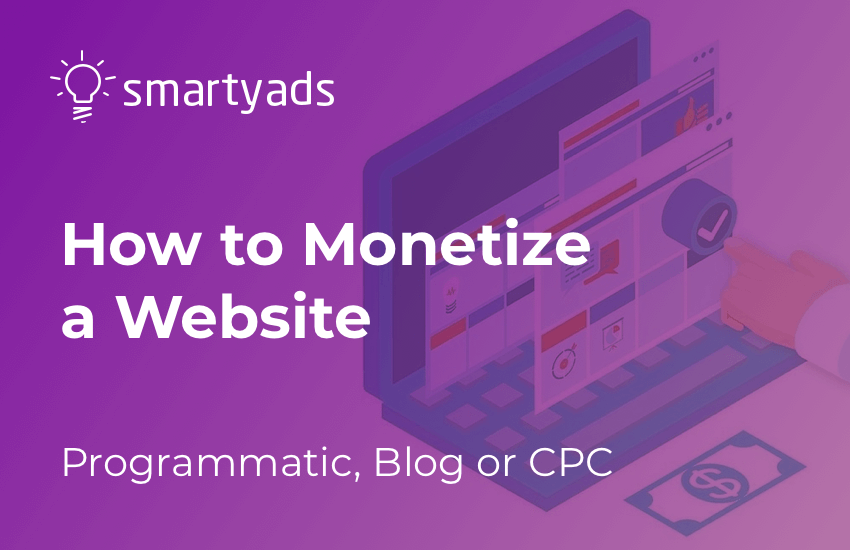The report delivered by MarketsandMarkets is promising the data web monetization market to grow to $6.1 billion by 2025, with a Compound Annual Growth Rate (CAGR) reaching 21.7%. Epic, but when you try to monetize a website, the abundance of solutions may cause confusion. How to make money with a website in case you need to achieve really noticeable results? The answer depends on the auditory specifics and the product or service that gets offered via blog or website.
Some methods can be fast but not always working, the others are slow but sure. In any case, if you are the website owner who has a great amount of traffic you need to utilize several methods in order to get paid and achieve the best yields. What are these methods, how monetize website strategies work, and how to apply them? Let’s see what, to begin with.
Traffic monetization: how many visitors are enough?
If you’re planning to monetize a website, mind that information portals do not monetize immediately, it is important to wait till traffic to your website gets sufficient.
Firstly, learn your target auditory, certain monetization strategies suggest using Google Analytics behavior flow report to find out how users interact with your site every time they visit it. Using such tactics you can define suitable advertising places on site.
If the domain of your site is relatively young don’t hurry up, you won't be able to monetize website traffic too quickly, as well, don’t overload every blog post or page with huge amounts of website monetizing ads, as it may scare away your daily website visitors or turn your premium content into spammy looking one. Same way, website owners point out, focus only on good quality traffic as accidental users will not bring you a good conversion.
If traffic to your website has already reached 500-2000 visitors daily it’s time to start looking for the advertisers on programmatic advertising platforms via real-time bidding SSP, Google AdSense, affiliate program, or monetization services. The amount of traffic is still very small? - Try growing it, writing the blog, or making contributions with guest posts and link building first.
Planning the income. How to monetize my website with a really great impact? If you are one of those bloggers who ask themselves this question, mind that you can actually plan your earnings. Think of the exact sum you want to achieve while you monetize the traffic the website makes. If you expect to get $6000 from your blog you can sell $150 online books or courses to 40 people. Or you can diversify and include into the plan other tactics, e.g ask your supply-side platform how much you are going to get for 1000 ad impressions served on your site, and so on.
Earning money: 10 best ways to monetize website
There are plenty of ways that can suit your objectives and work exactly for your monetization strategy. Go over each in the list and determine whether you can use them separately or it is better to combine several to reach maximum effect.
Products or services
A good way to monetize traffic website is by opening services like a job board on the hire me page, consulting services, training, or knowledge sharing hubs. If your experience is interesting for many people the chances are, they will appreciate you as a person and purchase the products and services you offer too. The same can be applied to any digital product - the ebook, series of podcasts, exclusive content, online courses, etc.
Let’s review the case with an online course. It could be the best way to monetize a website for you in case you have sufficient expertise and experience in the niche you are going to represent. In fact, the global corporate E-Learning market is expected to hit $49.87 billion by 2026. Since lockdown has seized the globe the number of online learners on Earth has tripled. For now, at least 77% of companies in the United States use online learning as one of the primary sources of education. The E-learning market is estimated to reach $50 billion worth by the end of 2026.
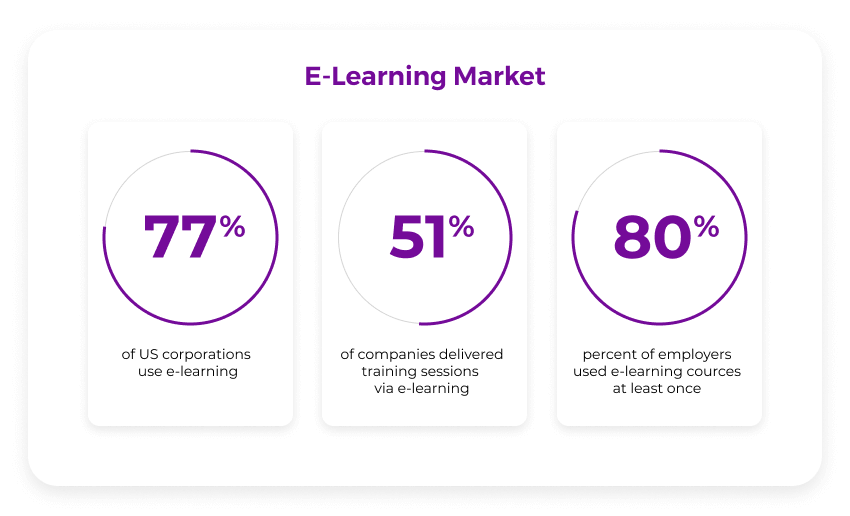
As a teacher, as a fashion blogger or an experienced cook you can earn money by sharing your experience or exclusive life hacks with your audiences ( in the form of online courses, paid content, etc.) As a teacher who sells online courses you can offer and host them at various platforms, Podia, Teachable, Kajabo to name a few.
So, how to monetize your website with courses or digital products?
Counting the followers. Do you have a database of people who subscribed to you on social media? Do you collaborate with partners in related topics and have access to their subscriber base? Use their email addresses to offer your online product or service.
Counting conversion. The conversion rate for an online course depends on the topic, price, and your ability to attract the right people and sell. Here’s how to calculate potential revenue: Revenue = Number of people you address x Conversion rate x Course price. 0.1% to 1% will be considered low conversion. Average conversions will reach 2-5% and high 6-10%.
Making first outcomes. If you notice that conversion rates from selling online products do not reach at least the average rate, this might be the sign that the niche is over competitive or that your audience is not loyal enough. In this case, you need to investigate the problem or try to monetize site by combining this method with several others.
As soon as your resource gains a lot of daily visitors you are free to monetize a website with ads. In case the website or blog grows additional traffic capacities you can collaborate with businesses and make money as an affiliate.
Affiliate programs
Affiliate marketing is a well-performing website monetization method that involves placing affiliate links on your web source. As a result you will get paid a certain commission per month (e.g from every user clicking on the link that’s placed in your content). Affiliate marketing industry’s worth surpasses $12 billion (according to the IAB stats). Coupled with email marketing affiliate marketing generates more than 16% of eCommerce income in the U.S and Canada.
Companies all around the world that belong to the different spheres and industries create their own programs in order to enhance sales. Affiliate marketing is usually based on affiliate programs. Affiliate program is a process of recommending and selling products by partners who receive their monthly fee/percentage for distributing a service or product.
For instance, your blog is about a coffee-making craft, there’re tons of coffee sellers so you can place their affiliate links on your advertising space to monetize website traffic. For every click on their affiliate link from your website you’ll obtain the fee. Such collaborations can last weather short term (several months) and long term (up to several years).
So, how to monetize your website with affiliate marketing?
At first, you need to determine the industry and business vertical you are going to work with. As reported by AM navigator, fashion is one of the most popular categories for affiliate marketing. In fact, it accounts for 18.7% of the total share. Sport and the outdoor verticals come second with 14.6% of the total share. Other popular niches include travel, health, weakness and beauty, electronics, education, and so on.
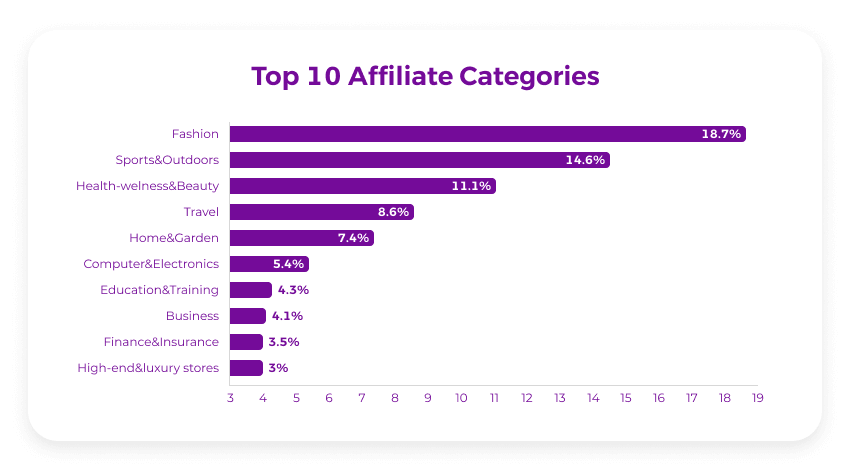
How to choose one? While choosing the niche for your program you should take into account how popular it is. Still, ideally, it should also correspond to your website content niche, or, at least the subjects should overlap or complement each other. Just like we described earlier with a coffee blog - collaborate with a coffee machine manufacturer and place their link on your website.
Where to look for programs? Affiliate networks are specifically created to easily match publishers with companies that are looking for such collaboration. ShareASale, Awin, Amazon associates, Cj Affiliate, Rakuten marketing, Avangate affiliate network, ClickBank, are all of those popular networks that you can compare in terms of commission, niche, pros, cons, and other criteria utilizing web listings.
With such a model of monetization your website will regularly gain money, at the same time, the task is also to pick the suitable program and make sure you get income without repelling your visitors.
Sponsored content
There’s a fairly easy way to monetize a site with sponsored content, or you can also try to make money out of a membership website. First things first, let’s start with the sponsored posts. Sponsored content is a type of content that you place on your website in exchange for money, in other words the brand pays you to place their material on your website. To make a website keep such articles published for a particular period of time (a month, year, or indefinitely) your partners should negotiate the terms with you individually.
There are several ways to make this type of content, the articles can be written by them, or it can be crafted by your own team of writers. The only thing that remains solid about such collaboration is that sponsored posts (articles) should always contain the link that leads to the website of your partner.
While monetizing a website with sponsored articles make sure that sponsored materials also align with your writing politics and blog categories. This way they won’t repel your visitors, on the contrary, they will provide additional value. On top of that, they will bring additional traffic every month (in case those are optimized for search engines).
What’s important to know. The effectiveness of the sponsored articles and the traffic that they generate are very important factors. Thus, be prepared to measure them up and communicate results to the company you collaborate with. As well, it is obligatory that such type of content had a clear marking disclosing that materials are commercial (sponsored) so that it wouldn’t mislead your visitors.
Defining the pricing. There’s no universal publication price formula and the price that you charge for placement will be negotiated with your contractor individually. Everything will depend on your traffic, niche, domain rating, and other web source characteristics. Top-tier websites usually apply package offerings, thus, you can research the value of your source and develop individual pricing that you can suggest to advertisers.
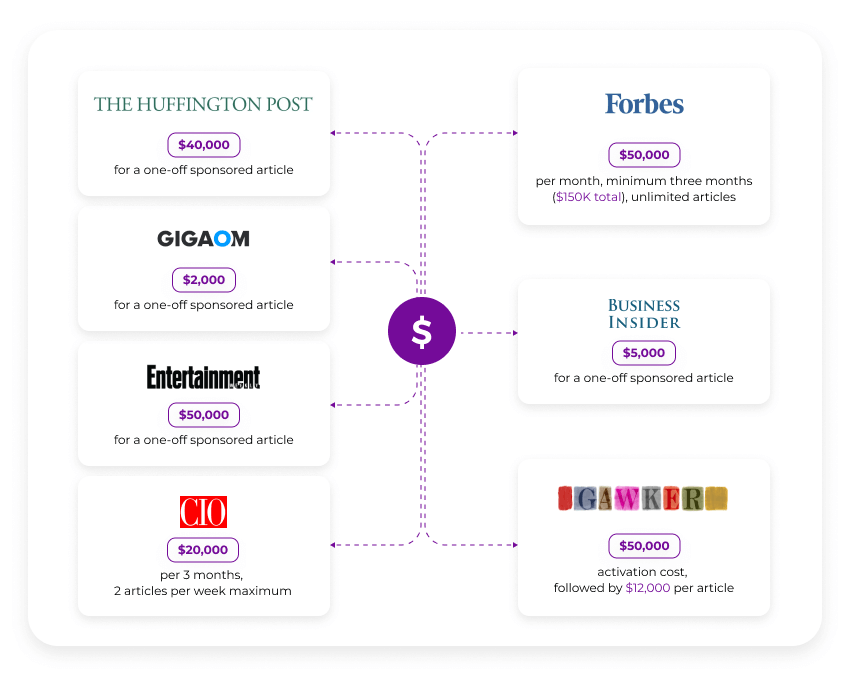
How to find collaborators? Look up for networks like Adproval, BlogHer, Blogsvertise, Buysellads, Cision, GroupHigh, Izea, Markerly, Sway Group, and The Syndicate. They are specifically designed to connect publishers with companies that search for sponsored content collaboration.
Membership website
Other popular ways to monetize website include gaining money on membership. The best part of the method is that it generates a stable revenue stream. As well, it improves your reputation and authority altogether. In order to double down the income, many websites also accept donations on such websites. The membership site can offer unique kinds of content that, for instance, enables people to quickly grasp the new language using special tricks. In the same way, it can suggest unique materials regarding any kind of subject. The only difference here is that visitors pay based on a subscription model, e.g like they pay in the gym.
Important specifics. Membership websites require a lot of work with content, as well it requires attracting new members on a regular basis. In order to organize the tech side of the payment mechanism, you need to be tech-skilled or have tech professionals on board.
Define the topic. Stick to your core qualifications choosing the area. Assess what additional value you are going to deliver to your subscribers (information or data that they can’t simply find on other sources). Research if the area is trending and if people are actually willing to pay for it (and what cost is usually changed for this type of content).
Plan long-term. Choose a content delivery style: whether it’s video, articles, or podcasts you will specialize in. Make a content calendar so that you could produce sufficient content on a weekly/daily/monthly basis (depending on your audience needs). Prepare the email list of visitors who subscribed to the website news and regularly send them updates. Capture the new email address once in a while utilizing the online forms, funnels, and lead magnets.
Social media
You probably didn’t realize but it’s totally possible to earn money from your website using social media even if your website is currently under construction. For instance, on your Facebook page you can monetize all kinds of content you create: from videos to texts. You can also monetize your app or website through Facebook ads but first, let’s review each option.
Sell content directly. Write your own ebook and publish it on Amazon Kindle. Promote it on your Facebook page. Anyway, whatever you do to grow your Facebook page, keep doing it; just post about your ebook in your news feed regularly. Use the most interesting excerpts (insights) from the book and post them in thematic groups or active discussions relevant to the topic. Plus, you can always outsource the book writing to the outside author.
Use paid Facebook ads. You can create a limited-time offer on your site and promote it on Facebook. An alternative method is to use Facebook's paid ads. In order to monetize traffic with maximum results, you can use both.
Find partnerships. Write a post that promotes something - a product, a service, another blog - and exchange it for a certain amount of money (that brand will pay you). In fact, this is one of the types of affiliate marketing but the income, in this case, will be much higher. The main task is to find the brand and negotiate such collaboration - frequency of posts, payment, etc.
Try Brand Collabs Manager. It is a new functionality from Facebook that helps advertisers find publishers. If your Facebook page has lots of active subscribers it is your chance. The service makes it easy to assess how these posts with branded content perform and whether they are effective. As a publisher, you can share your Facebook audience with advertisers. This will allow their affiliate ads to be served directly to your subscribers, thereby increasing audience reach without annoying subscribers with advertised posts.
RSS feed ads
RSS feed ads allow making money on your website as well. RSS feed allows people to keep track of the new information that appears on your website (without actually opening the website each time). A single RSS aggregator e.g like Feedly people can view updates from all websites they are following (in one dashboard and in standard unifying format).
After Google opened a new opportunity to advertise in RSS feeds, this RSS became the standard advertising medium just like contextual ads. RSS feed is a ‘site monetize’ tool that can be used not only for regular banner rotation but also to conduct full-fledged marketing campaigns on the Internet. Here’s an example of how they may look.
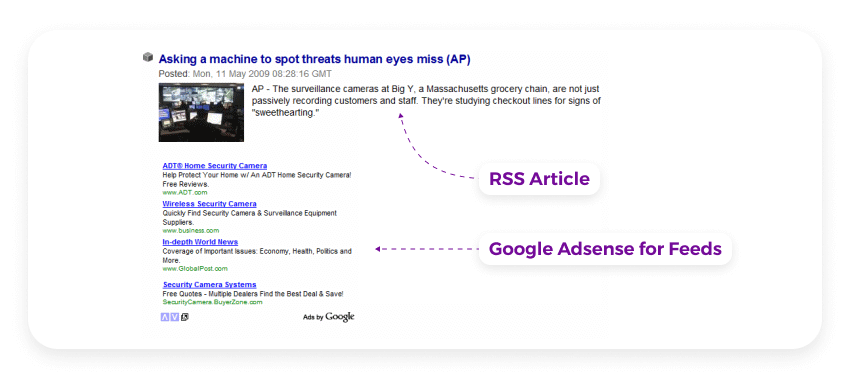
When RSS feeds are especially beneficial. There are specialized RSS aggregators that gather all discount offers from various stores and distribute this information through RSS feeds - for example, CouponBar, All Online Coupons, and CouponClock. Some of them, such as Deal of the Day and Phatdeal.com, provide the ability to customize the RSS feed according to the subject of the offer.
AdSense code for monetizing sites with ads. Google code gives the best way to monetize website with RSS. If you use Feedburner and you have more than 500 subscribers, you can easily place the AdSense code in your RSS feed. If you don’t there is a list of other companies you can try like CrispAds, Feedvertising, Pheedo, etc.
3 rules for planning RSS ads. When monetizing website with RSS stick to the main 3 rules: Relevance is the most important so make sure the ads that appear next to your content in the RSS feed have the same thematics. A number of ads, your content in feed should not be buried in ads, several relevant ads per article is enough for effective monetization. Clear marking, the ads should be properly marked to avoid confusion between content and promotional materials.
Accepting charity and donations
Accepting charity and donations is a good website monetize strategy that can be applied to sources that need development or do something valuable for society. For instance, if you have good traffic you can ask visitors to make donations so that you could develop and grow your project. It will work specifically well in case you offer visitors something useful for free, let’s say valuable content, software, or some kind of web service. In the same way, you can ask for donations if you do socially significant work but have no other sources of financing (animal sheltering, etc.)
How to monetise a website with donations. In order to get started, you need to post a donation request on your website and put in the donation form/button. With this, you can ask for a certain amount of money or you can also suggest making a donation with a flexible sum so that visitors would define the amount themselves.
Donation plugins and buttons. In order to implement the charitable button first, you need to find the best monetize website plugins. For instance, if you have a WordPress site you can use button plugins like ‘Give’ or ‘Charitable’. Such payment services as PayPal offer their own mechanisms for taking donations so that you could place a button on your website.
The money you can earn with donations. There’s also a way to monetize websites that are not related to non-profit projects. Again if you have an extensive base of subscribers and fans, you can earn $2493 per month, the evidence to this is a source that belongs to the blogger Scott Alexander. Another example is Tim Urban who gets $12k per month from his fans on Patreon.
Asking for donations in email. You can create a community of loyal readers through email and send them your content. This tactic will work just as well as if you were monetizing the web content. Those who are interested in regular content updates will receive them along with your donation requests. For this, all you have to do is to put the link “donate” at the footer of each email that you send to your users.
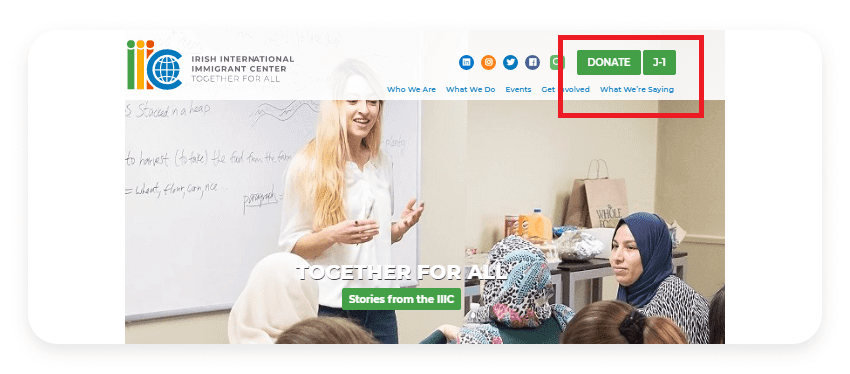
Data monetization
In the world being constantly stormed with privacy concerns, we face a big identity crisis. Cookie crumbles, IFA restrictions, GDPA, and CCPA regulations set the advertising industry into big scrutiny. With new legal privacy frameworks, not every user is ready to provide consent for personal targeting, many do opt out of it or withdraw their consent for processing personal data. As the world is moving towards transparency and privacy rights improvement new initiatives severely limit targeting capacities, making data incredibly scarce and valuable. It gives the power back to the hands of publishers who can mobilize their capacities for producing this data and selling it to those who need it most - advertisers.
What types of data can be monetized? When interacting with visitors, websites collect a lot of valuable user data: geography, gender, age, preferences, and more. Of course, you cannot transfer the personal data of users to third parties. Still, you can sell anonymous non-personal user data: collected information about device type, demographic data, country, and the like. Such information may be very valuable for companies that conduct various surveys regarding the Internet markets.
How should it be collected? Again, with new regulations in place as a data collector, you should guarantee that all the personal data is being collected, stored, and processed in accordance with regulations. Read how to prepare for the GDPR and CCPA and add clear mechanisms for consent giving and withdrawal on the website.
How to sell data?. In order to sell the data to the advertisers or to the data collectors, you need to add specific integrations with partners you are going to collaborate with. In case you are an app developer you need to install data monetization SDK. The data monetization SDK does not compete with other SDKs, thus, you can add it along with other SDKs and turn it into additional income. The more parameters you open for SDK collection, the more you will earn. Still, while adding the data monetization SDK to your app, make sure you only include parameters that are allowed to transfer according to the regulations.
Contextual advertising
Contextual ads are those ads that are thematically related to the content of your website. Despite the economic downturn caused by lockdown in 2020, contextual advertising is still projected to reach US$447.9 Billion by 2027 according to the reports. This means that you can monetize your site with contextual ad units by collaborating with advertisers directly or by offering your inventory specialized platforms.
Google AdSense is considered to be one of the best ways to monetize a website with PPC. This option works well, especially for a new website. Still, it will perfectly work for bit e-commerce websites monetization. There’s no defined bar of visitors that your website needs to reach in order to advertise with AdSense which also makes it fairly easy to monetize your blog if you haven’t reached millions of visitors yet.
When do contextual ads work best? Monetization tools like contextual ads perform best if your traffic is high and reaches 500-1000 visitors a day or several million per month. The greatest income can be obtained from the web sources that specialize in the following topics: real estate, automobile, finance, loans, tech. These niches are highly popular.
There are also specific topics, for example, entertainment, which is also very popular but not always universally convertible. The average traffic on them can reach 50,000 unique users per day, still, advertising in such a vertical will be interesting to the narrow circle of business owners. Thus, you can successfully monetize web resources if you have both high traffic + a competitive vertical.
Cost per click for contextual ads. Traffic monetization of your blog or site will depend on visitors and their clicks. Reportedly, contextual advertising can bring you around $0.05 to $0.5 for a click (cost per click may vary depending on the country, business niche, ad format, size, etc.) In order to estimate potential revenues from ads AdSense created an online revenue calculator that takes into account your region and website category.
Typical placement for contextual ads. Most often contextual advertising banners are placed before or after the text part at the blog or website. The blocks with banners are oftentimes located at the sidebars but such ad placement is considered less profitable than the ones located at the top. The normal CTR for contextual advertising stays in the vicinity of 1,5%.
Programmatic website monetization
Programmatic belongs to the best monetization tools designed for publishers. There are two sides involved in the process - a seller and a buyer of website or blog inventory. In order to join the programmatic buying, the publishers have to authorize at SSPs. The advertisers register at demand-side platform in order to reach and bid for available placements.
Monetizing traffic with CPM. Programmatic advertising typically functions based on the cost per mile payment model. Cost per mile means that the advertiser pays for 1000 impressions of ads that take place at various websites (depending on their audience). Cost per thousand impressions can be very convenient for the advertisers because they pay strictly for served impressions (no matter how many clicks those impressions generate). In such circumstances, advertisers who prepare really interesting offers and engaging ad units to win - they get plenty of clicks whereas the payment is taken per impression (which is much cheaper than per click).
How programmatic helps you to monetize website with ads. So, what is programmatic advertising? How does a programmatic algorithm decide where to place ads? The most important thing that is taken into account by AI and ML is targeting. Let’s imagine that a visitor opens your website page. If the characteristics of the visitor who opened your website correspond to the targeting criteria of the ad campaign (set by the advertiser on DSP), the DSP will bid on it, the auction will happen and the highest bidding advertiser will win an impression on your site.
Then, the ad pop-ups at your website, the visitor sees it and you get a certain payment automatically transferred to your SSP (publisher’s selling platform). The next time someone else (let’s say with different characteristics) enters your website, the auction starts for this visitor, and the brand that is most interested in showing the ad to this visitor (one who offers the highest payment) wins.
In order to be able to bid, win and pay for impressions advertisers need to have their campaign budgets filled on DSP. For publishers, meanwhile, monetization of website on SSP is free (commission is only calculated based on earned yields gained from ad serving). All that you need to do as a publisher is to meet the criteria of the platform regarding traffic, register your inventory at SSP and start earning. Which monetization strategy to select at this point? Let’s find out from the information below.
Programmatic monetization strategy: selecting the right one
Programmatic sure sounds like the great way to monetize your site with ads because it doesn’t require any efforts or investments from publishers, apart from the fact that you’ll have to configure the campaign in the dashboard. If you want to achieve the best monetization for website, first try to properly assess your inventory to choose the auction type that will bring the most out of what you have to offer. How much you are going to earn per 1000 impressions while serving the ads on your website will mostly depend on the geolocation of the user who sees the ad, the vertical your web source belongs to, and the deal type (find specifics below).
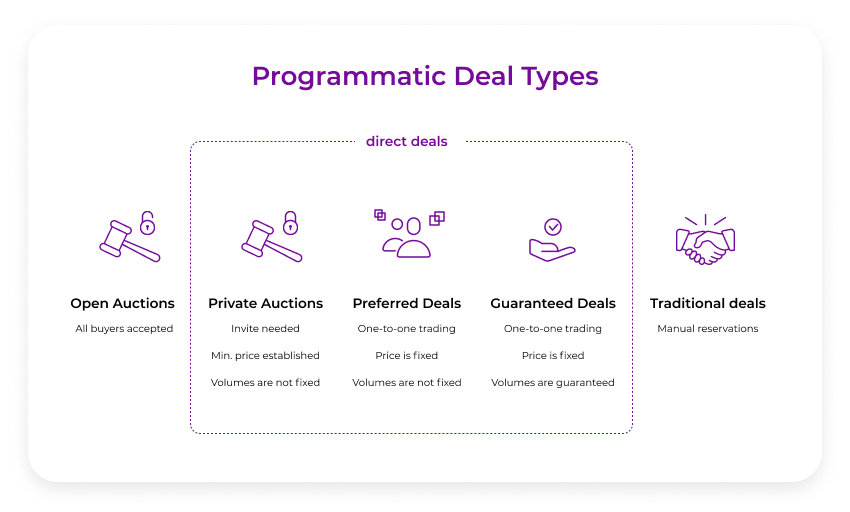
Open RTB auctions
Real-time bidding technology helps to monetize your website with ads through real-time bidding auctions. Programmatic technology includes RTB auctions where publishers meet with advertisers to sell their website inventory. Same way advertising space selling is automated via direct or guaranteed programmatic deals.
How does RTB web monetization work?
- While the user’s page is loading, the SSP sends the user data (IP, browser, request details) to the advertising network.
- At ad networks, advertisers are bidding on the impression using DSP.
- The highest bid offered wins the competition for the ad impression.
- The winning ad impression is transferred to SSP and is served on the user's browser. The whole process takes milliseconds.
Programmatic direct
Site monetization with programmatic direct can give advertisers the possibility to book guaranteed ad impressions in advance from a certain publisher’s website. If you are an advertiser you get a couple of perks and the most important of them is ability to control the price. Programmatic direct includes both guaranteed and non-guaranteed deals. If you are monetizing websites as a publisher you should choose this one in case you have exclusive or very valuable inventory that you don’t want to sell at open RTB auctions.
Publishers who want to focus on brand safety and seek premium placement on publisher source select programmatic direct as a way to monetize website. Programmatic direct also helps advertisers to find particular inventory, thus while selling ad space publishers can negotiate the pricing and elevate the value of their ad placements.
Programmatic direct enables advertisers to get the first look at the inventory that guarantees the premium advertising space access and inventory quality.
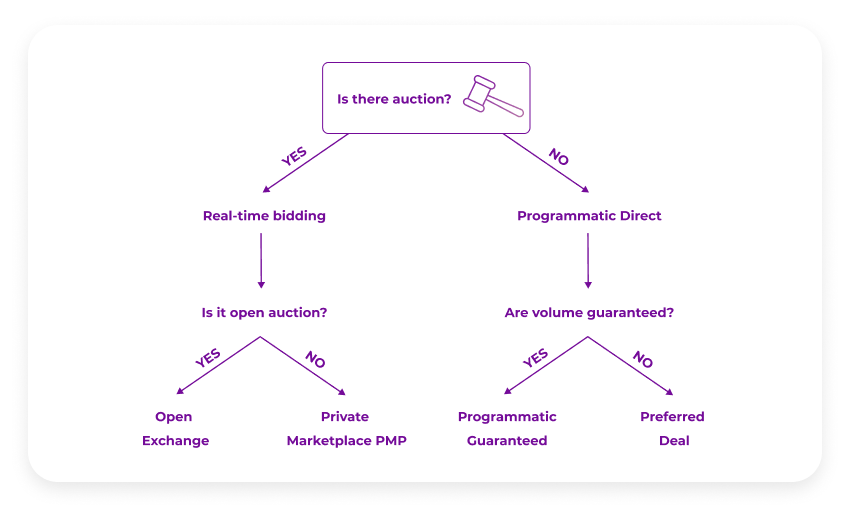
Programmatic guaranteed
This web monetization mechanism includes the fixed terms and obligations between the publisher and the advertiser considering the required amount of ad placements and price. This way, advertisers can book selected website placement ensuring essential placements volume and quality. You may choose this one as a publisher in case you want to be sure you sell everything beforehand.
Thus, you can monetize website traffic avoiding the actual auction and having more control over what you sell and for what price. The publisher and advertiser negotiate and pre-agree value (usually a fixed CPM model). For publishers it will bring higher incomes from inventory, for the buyer there’s an opportunity to select preferable advertising space that will perform effectively.
Header-bidding auctions
Popular programmatic technology allows you to monetize your website via open RTB auctions and receive bids from several advertisers simultaneously. In the average “waterfall” model the bids are obtained in turns so the best website inventory is usually taken in the first round of bids.
With header bidding, publishers receive more control over their inventory as this monetization method provides a clearer picture regarding demand. Bidding simultaneously, advertisers suggest a higher price for website inventory so compared to the waterfall approach the profit increases from 10% to 30%.
How to monetize website traffic with SSP: configuring dashboard
Such technology as Supply Side Platform made it easy for publishers to sell ad space in real-time. With SSP publishers are selling ad space effectively because they’re connected to the greatest pool of advertisers who want to pay a high price for the advertising space. On some platforms monetizing your website is possible without traffic limitations (or with a pure minimum requirement regarding traffic per month or per day). In the overcrowded world of web monetization, SSP platforms reduce the likelihood of mistakes and enhance conversion rates without efforts.
Important SSP controls you need to leverage
While configuring ad campaigns on DSP advertisers decide for themselves how much they are willing to pay per impression. Then, they instruct the system to bid only on those placements that meet their targeting criteria and budget limitations. Setting a programmatic campaign on SSP, publishers can rest assured - their interests are protected as well.
For the high traffic websites and blogs with premium interesting content, the advertising space cost will definitely be higher. Specifically for such cases, SmartyAds SSP allows publishers to participate in the PMP and strike direct deals with advertisers. In private marketplace deals, advertisers get access to the exclusive inventory that’s not available on RTB. Thus, in PMPs publishers typically charge higher prices which corresponds to the high quality of the placements they offer.
Let’s review all of those SSP controls that can turn your website into a money-making machine.
Price floors. Price floors are the minimum price thresholds for the impression served at your site. Below that price (that you configure individually) ad space won’t be sold under any circumstances.
Ad format, size filters. Let’s say you don’t want to put at risk the user experience on your site with too flashy or big creatives. The good news is, on SSP platforms you can also restrict and filter out certain ad types, configure different types and sizes of ads you prefer. For instance, you can allow only display ads, or only video ads and aim for smaller or bigger resolutions (depending on your preferences).
Additional parameters for ad formats. Playback Methods, Placing, Supported MIME Types, Video Linearity, Video Start Delay will help you to adjust video creatives properly and according to your wishes.
Most beneficial ad formats for monetization
There are numerous digital ad formats that you can choose for site monetization from static to dynamic ones. Each of the formats will better suit certain objectives, certain websites, and thematics. For instance, interactive ad units will better work in such environments as in-game because these gadgets have stronger capacities for rendering such creatives. Plus, there’s a close contact between mobile gadgets and their owners which is not found on the desktop. When selecting which format to choose for your website monetization you should also care about user experience. While placing few ads may bring a little result, placing too much may repel visitors away and harm their experience while reaching your content.
Push ad format. Push traffic is highly sought after because it is fairly cheap and helps media-buyers advertise across the broadest categories, including restricted ones e.g like gambling. Web push notifications are short messages that pop up on the screen of a mobile device or computer. To send push notifications, you must first obtain the user's consent to send these notifications. There are several types of push ads designed for the web environment - web push notifications and in-page push notifications. In-page push notifications are served directly on the webpage, this, they don’t require a subscription. Push notification ads can contain text, image, button, link. That is, advertisers can customize their look up to their needs. Still, website owners can also configure ad displaying on their website through SSP.
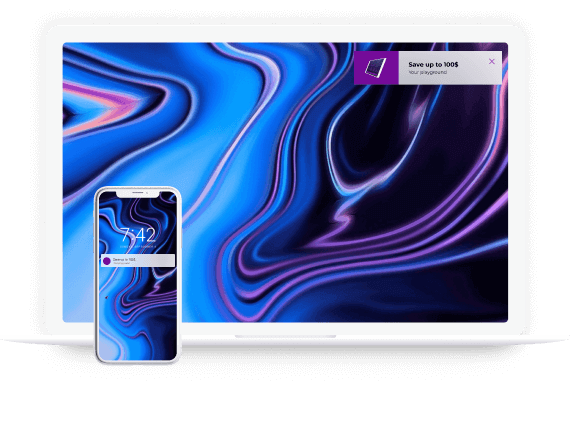
Rich media and banner ads. You can monetize your website using banners and it is probably the simplest way to do so when you think of formats. These ads are good at displaying and won’t give any undesirable surprises in terms of creative rendering or slowing the website’s loading time. Thus, these formats are quite reliable when it comes to performance on websites. Typically banners also cost less than other formats. At the same time, due to the banner blindness problem, a simple banner was a bit modernized to include more eye-catching elements, that’s how rich-media creatives appeared. While monetizing websites with rich media or simple banner formats, remember to find the perfect balance between the number of ads placed per page, this way you can save users from ad fatigue.
Native ads. Native ads can be good for those website owners who don’t want to sacrifice user experience and value it overall. Native ad formats enable publishers to monetize effectively and earn money from ads at the same time. These units blend together with the rest of the content or website elements, replicating their functions. For instance, it can be a recommendation widget ad that looks precisely like the rest of the content in the recommended articles section. It can be an ad block in the social feed that looks like actual in-feed content and so on. If you plan to monetize a website with native ads remember that these ad units can also benefit your on-site experience as they often deliver valuable information to the user, these ads are actively reposted, liked, and even shared.
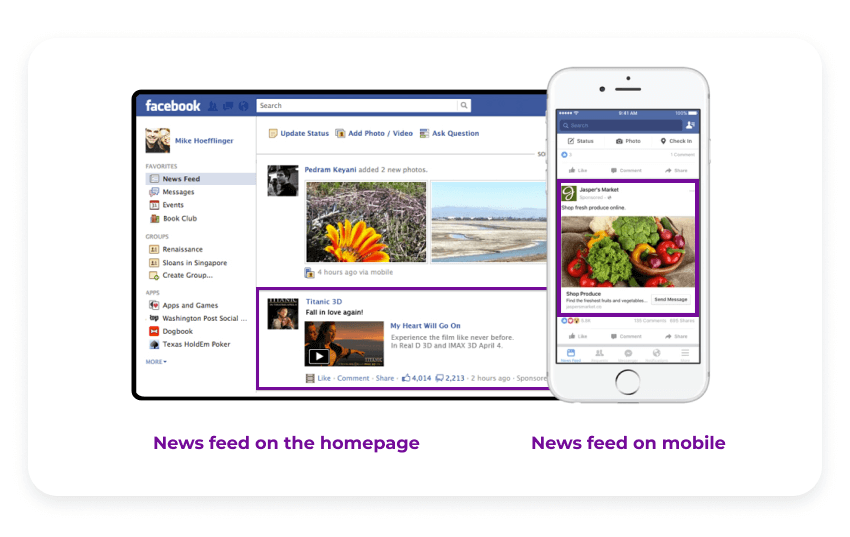
Video ad formats and Connected TV. Video ad formats are those formats that can really communicate the brand’s voice and that’s why they are so popular for branding ad campaigns. They raise brand awareness and help to fully showcase the advertised product or service (in the tiniest of detail). So, how can you monetize with video ads? First of all, in order to serve video ads, you need to have a video player. Those ads that match a video player on your website will be automatically displayed inside of the video content while it is playing (before, in the middle, or after the video initiates). Worth mentioning that the same video ads can be broadcasted on Connected TV. Being served in such an environment video ads gain a whole new level of memorability as big-screen TVs immerse users and keep them engaged.
To wrap it up
If you regularly ask yourself - how to monetize my website? Then it is probably a good sign you need to start off with a little research. Sure, when you think about how to monetize a website it is easy to get lost in the options as there are plenty of things to try, from affiliate marketing to sponsored content and pay per click advertising. Whilst thinking of ways to monetize a website pay attention to several factors. Of course, the money-making properties of the methods you select are very important, still, you should also care about user experience since visitors are your main asset, without them, you can’t really monetize website effectively.
SmartyAds is here to offer you a solid monetization with the most advanced SSP technologies. We actively use all sorts of programmatic monetization methods, including RTB, header bidding, or direct programmatic deals. Convenient SSP dashboard includes all necessary functions and publisher controls to extract maximum value from your website and achieve greater incomes.
